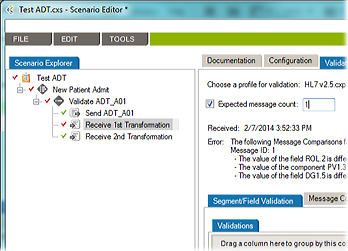Tip 16 in the Interoperability Tip Series
The past few tips have covered HL7 testing and test automation. This one covers what you should do with HL7 test reporting.
Creating Test Reports
As part of the testing process, you’ll want to run reports. The reports should document the following:
- The number of times the test was run, as well as test duration – if you’re sending messages, this helps you understand performance.
- Test results, including positive validations and failures.
- The messages that were used; note the data source (SQL queries pulling from a database, an HL7 message feed, a batch file).
- Summary of test scenarios that were run.
Just as you need sample messages elsewhere in the interfacing lifecycle (for instance, scoping), you need them for testing, too.
As a reminder, sample messages give you custom formats, structure, and data values.
For example, imagine you’re interfacing the lab information system and the ADT. You’ll want to look at the issues that were highlighted during the gap analysis. Your test messages need to cover your use cases and the following:
- Events that are exchanged
- Code sets/vocabulary and varying field lengths
- Optional segments and fields, especially varying optionality
Go with Production Data
Now about the sources of your messages: we’re going to come right out and say it – you need production data. Here’s why: Once you have the right message samples and test messages, you need to make sure you have a sufficient volume of quality test data. And your production data accurately reflects the data you work with day in and day out, both in data type and format as well as volume. And that means you’ll be able to accurately test for load and performance, and avoid message workflow problems that can bring down interfaces.
In our next tip, we’ll explain how you can de-identify production data to use safely in your test system.
The Caristix 3.1 release focuses on test automation. These new features add a lot of power to the Caristix platform. To get started on using them, check out our new test automation tutorial series.

